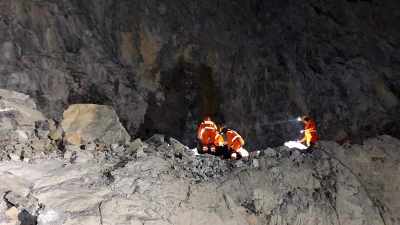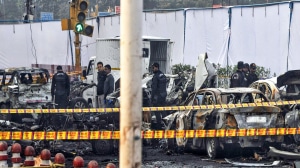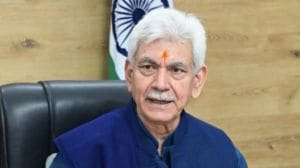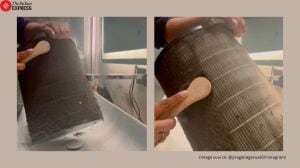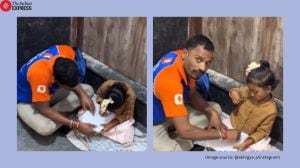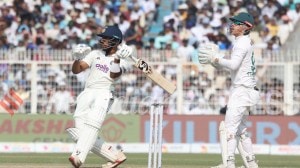When we come to barracks,we first find out where our samaj is staying
In one Bihar district,police live in barracks of caste
Bhojpur has always been caste-sensitive,Bhagalpur communally sensitive. The first district has seen 27 caste massacres with 173 deaths since 1976,and was the power centre of the Ranbir Sena,the now disbanded upper caste army. Bhagalpur in 1989 saw riots that left 1,070 dead,mostly Muslims.
When Ranbir Sena chief Barmeshwar Singh Mukhiya was shot dead in Ara in Bhagalpur on June 1 this year,the fear was therefore about a caste backlash. The Ara police lines sent all 400 personnel out on the roads.
They came out of barracks that are casteist in themselves. The Ara police lines have 16 barracks in four double-storey buildings. One building is occupied by the upper castes,the floors of another are split between SCs,OBC Yadavs and Muslims,and the third is occupied largely by OBCs,except for one of the barracks that hosts Rajputs. The segregation is more comfortable than in Patna,which is crunched for space.
In Bhagalpur,the division is not barrack by barrack,but within each barrack. The five barracks,called Ganga,Yamuna,Saraswati,Godavari and Kaveri,pack together over 550 policemen,some 90 of them Muslim. Any policeman has to share his 60 20 barrack with others not of his community. The space for each community has been clearly earmarked,by mutual understanding.
Divided by barracks
With only three kitchens,the Ara lines limit the policemens options. They have to share food cooked in the same ovens. When they eat,however,it is in caste groups,some in the kitchens and some carrying their dishes to the barracks of their own caste. The Muslim policemen have one of the kitchens to their own.
Most policemen take pride in being caste-conscious. We are policemen as long as we are in uniform. Otherwise,we are various caste groups bundled into the barracks, says a constable.
At any of the barracks,the surname of a policemans tin box makes it clear who live there. At the upper castes building number one,whose four barracks each measure 6020 ft,one side of the ground-floor barracks have Bhumihars while the other has drivers. Of the two barracks on the upper floor,one each houses Rajputs and Brahmins.
Building number twos lower floor has SC/STs and OBC Yadavs in separate barracks. The upper floor has Muslims in one barrack and head constables in the other,with the SPs of some districts having recently initiated a move to give separate barracks to head constables.
Below a ceiling fan where a blade announces,Muslim barrack 2, a policemen in a skull cap reads the Quran. A constable prefers not to discuss caste and community issues and instead points at the filth around. In building number three,one of the first-floor barracks is for Rajputs,with the other three housing OBC policemen. Building number four is for police training.
Problems with the living conditions pervade across castes. The 400 policemen share 10 hand-pumps and 10 dirty toilets though they have managed a neat division of living space. Plaster peels off ceilings,windows are without bars and even hinges,water pits all around invite mosquitoes,and tadpoles in the kitchens sometimes jump on to policemens dishes during meals.
No one bothers about the living conditions of 85 per cent of the force, says head constable Rambriksha Mahto. About the caste divide,he says,I have taken initiatives to minimise it in building number three but it needs redressal from the top.
Ara sergeant major Nand Kishore Singh agrees,We are still far from dismantling the caste and community division in the barracks. But he says the caste system has still weakened from what it used to be a few years ago.
There is no system of allotment of places to policemen in the barracks.
Divided within barracks
When we come to live in the barracks,we first find out where our samaj is staying, says a policeman in Bhagalpur. Samaj here means caste or community rather than society.
Once a recruit reports to the reserve sub-inspector (RSI) at the police lines,he is asked to find his own place in the barracks. Neither the RSI nor the sergeant major,whose job is allotting duties to all policemen,needs to ask where a constable or a head constable has found his place. If a constables phone is switched off,all the RSI or the sergeant major needs to do is to go to whichever barrack has the right signs.
Outside one of the barracks is an Islamic symbol engraved on the cemented wall. Outside another,housing only SC/ST policemen,are posters of B R Ambedkar.
The Islamic engraving is outside Ganga barrack; in the middle is a self-designated Muslim zone of about 40 policemen. On the sides of the same barrack are upper caste Bhumihars,OBC Yadavs and tribals,each group in its own space.
Mohammed Khurshid,who hails from UP,insists there are no clear caste or community divisions,dismissing the earmarked zones in his Ganga barrack as a matter of choice. Head constable Abdul Bari does not wish to discuss it.
A few metres away,an OBC head constable says,The caste and community system is so deeply entrenched in the police that no one can end it. Even a senior officer gives favoured duties to others of his caste. I have known intances when policemen have allowed undertrials of their community to escape from custody.
Yamuna barrack has separate zones for Rajputs,Brahmins and OBCs. But a few younger constables of various castes are living together. We are frowned upon by seniors for trying to dismantle the caste divide, says a new recruit from Sitamarhi. But there are still separate Bhumihar and SC/ST kitchens.
Five years ago,Bhagalpurs then senior superintendent of police J S Gangwar,now IG (HQ),had partially succeeded in removing the caste-based kitchen system. Kitchen number one is open to all but,he agrees,the groups generally dont eat together. They take their dishes to their barracks. This kitchen offers the best food,attracting the most people, says a policeman.
At Yamuna barrack,a Rajput head constable,who cooks for himself,wishes the government allotted barracks according to seniority.
At Kaveri,which houses only head constables of all castes and communities,the kitchen is common. At Godavari in the same building,one part houses only SCs and STs while another has a mixed population,but with clearly demarcated caste zones.
Bhagalpur sergeant major Lallan Roy denies there is any caste system in the barracks. But asked how policemen are allotted places,he says: They are generally sent to find space in a barrack and report to us about having found a place.
He concedes there is some rigidity about the caste system among senior policemen but adds,Policemen of the younger generation do not show such narrow-mindedness.





- 01
- 02
- 03
- 04
- 05


